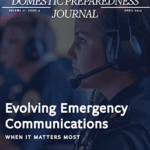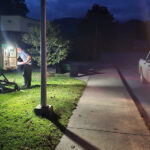This is an article by David Winks, Steve Chill, Frederick Ferrer, Michael “Apollo” Lovell, Mike Swearingen, and Mary Lasky, an Article Out Loud from Domestic Preparedness, December 4, 2004.
Electricity substations are traditionally only protected by chain-link fences and signage warning of the dangers of high voltage. However, this still leaves property vulnerable, especially to weaponized drones attacking from above, a mode of terrorism being used more extensively across the world and at home.
Learn about the vulnerability of electric utilities and the available options to combat this growing threat.
Now to the featured article.

David Winks
David Winks is the senior advisor for Advanced Technology. He currently serves as a subject matter expert for the Foundation for Infrastructure Resilience and as part of the U.S. Department of Homeland Security (DHS) Resilient Power Working Group. He has been a subject matter expert in the U.S. Department of Defense’s Electromagnetic Defense Task Force and the North American Electric Reliability Corporation EMP Task Force. He is a co-author and co-editor of the book Powering Through – Building Critical Infrastructure Resilience, author of the report Protecting the U.S. Electric Grid Communications from EMP, and contributor to the DHS Cybersecurity & Infrastructure Security Agency report Resilient Power Best Practices for Critical Facilities and Sites. Currently working on advanced data centers using immersion cooling for secure environments, David has developed cyber defense architectures utilizing binary hardening, software-defined perimeters, zero-trust access, artificial intelligence, automated orchestration, and restoral for information and operational technology networks. His work includes EMP-shielded natural gas turbines, fuel cells, Stirling engines, solar thermal systems, wind, geothermal, and hydropower generation. He is a co-inventor of a patented, rugged, ground-conformal solar thermal system. David has a degree in physics (cum laude) with additional coursework in electrical and mechanical engineering.
- David Winkshttps://www.domesticpreparedness.com/author/david-winks
- David Winkshttps://www.domesticpreparedness.com/author/david-winks
- David Winkshttps://www.domesticpreparedness.com/author/david-winks
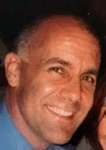
Steve Chill
Steve Chill is a retired Marine with decades of security experience in domestic and overseas environments. He has executed or created U.S. Department of Defense/Service policy for the security of special weapons, ships, and bases of all types and units ranging in size from combatant commands down to the individual Marine. He was recently an author/editor of both Joint Base San Antonio’s guide titled Domestic Electromagnetic Spectrum Operations and Infragard’s Powering Through: Building Critical Infrastructure Resilience.
- Steve Chillhttps://www.domesticpreparedness.com/author/steve-chill

Frederick Ferrer
Frederick Ferrer is a national intelligence professional, homeland security expert, and educator. He is a 20-year military intelligence veteran who worked with the upper echelons of the U.S. intelligence community before retiring and returning to his home state to complete a PhD program of studies in American history, with minors in Russian and European history. Mr. Ferrer’s last posting was at the Idaho National Lab’s National Security Division. He held top secret security clearances across a half-dozen agencies over four decades. Mr. Ferrer currently teaches topics like counterintelligence, cyber- and anti-terrorism for various universities across the nation.
- Frederick Ferrerhttps://www.domesticpreparedness.com/author/frederick-ferrer

Michael J. "Apollo" Lovell
Brigadier General Michael J. “Apollo” Lovell, USAF (Ret.), served as the United States Strategic Command Mobilization Assistant to the Director of Intelligence and flew 212 mission-hours as the Airborne emergency action officer on the E‐6B Looking Glass Airborne Nuclear Command Post. General Lovell is an intelligence, surveillance and reconnaissance, and cyber senior leader who served the Texas Air National Guard as the director of intelligence. He is an ISR mission commander with over 1,800 mission hours in the MQ-1, MQ-9, MC-12, RQ-4, RQ-170, and U-2. He has a master of science in executive leadership and is a graduate of the Maxwell School’s National Security Studies at Syracuse University and Kenan‐Flagler’s Executive Development program at the University of North Carolina.
- Michael J. "Apollo" Lovellhttps://www.domesticpreparedness.com/author/michael-j-apollo-lovell
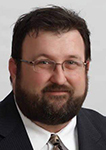
Mike Swearingen
Mike Swearingen is a retired electric cooperative power systems engineer with 20+ years of experience. He has worked in every aspect of power systems operation, including control systems, protection systems, transmission design, substation design, distribution design, and NERC compliance as well as regulatory matters. He represented his cooperative as a member of the Transmission Working Group, Market Operations and Policy Committee, and Market Working Group at the Southwest Power Pool. He served as an analyst and independent merit reviewer on several projects at the Department of Energy, was a technical advisor for the National Electric Energy Testing Research and Applications Center, and is an IEEE senior member.
- Mike Swearingenhttps://www.domesticpreparedness.com/author/mike-swearingen
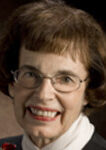
Mary Lasky
Mary Lasky, a Certified Business Continuity Professional, serves as the program manager for business continuity planning for the Johns Hopkins University Applied Physics Laboratory, where she coordinated the APL Incident Command System Team. She also is a member of InfraGard, where she is the vice chair for the InfraGard EMP-SIG. In Howard County, Maryland, she served as president of the Community Emergency Response Network Inc.; president of the board of directors of Grassroots Crisis Intervention Center; and for Leadership Howard County is co-chair of the steering committee for the Leadership Premier Program. For many years, she has been adjunct faculty at the Johns Hopkins University Whiting School of Engineering. She is the immediate past president of the Central Maryland Chapter of the Association of Contingency Planners and has held a variety of supervisory positions in information technology and in business services. Her consulting work has included helping nonprofit organizations create and implement their business continuity plans.
- Mary Laskyhttps://www.domesticpreparedness.com/author/mary-lasky
- Mary Laskyhttps://www.domesticpreparedness.com/author/mary-lasky
- Mary Laskyhttps://www.domesticpreparedness.com/author/mary-lasky
- Mary Laskyhttps://www.domesticpreparedness.com/author/mary-lasky





